C2 Wrecker Survivors
This page sports a gallery of existing Wreckers, and email submissions of the same
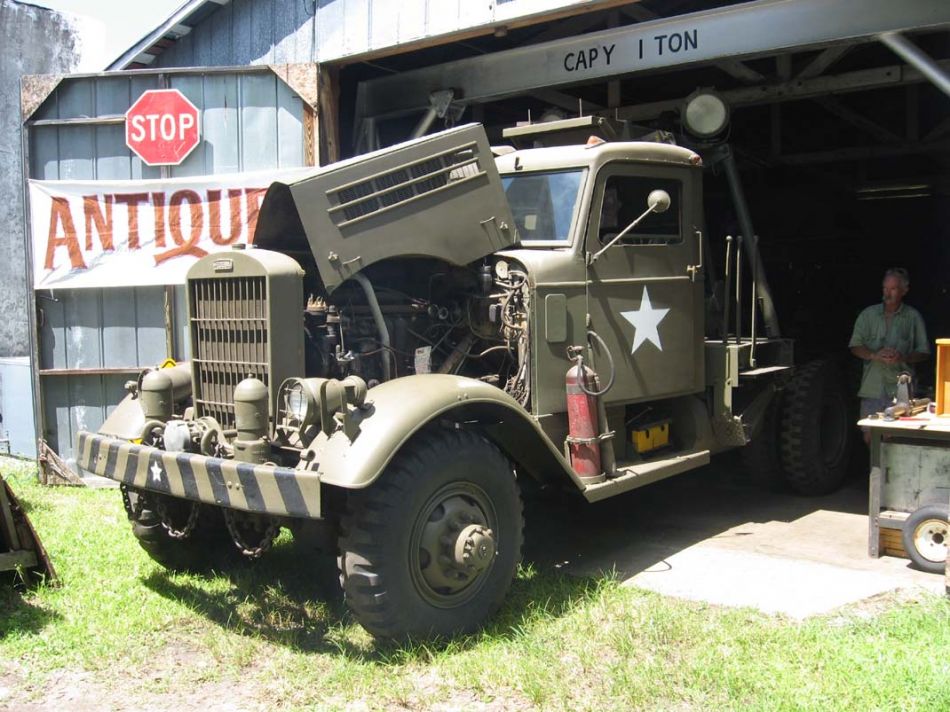


One each main and rear jack stand for the outrigger we are missing them. We also need a Dayton fifth wheel as ours is severely damaged by rust. The main jack stand stowed on each side of the truck. Here is a photo of the parts needed:

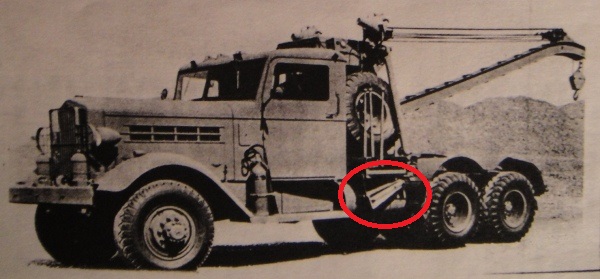
If you know where we can find these parts please contact us at taigh@twinbeech.com, or call 209-982-0273
Admission of guilt: Many of the photos above were shamefully taken from the various sources on the internet. I will be trying to insert photo credits and links as I can find them. Please bear with me. If you have information or photo credits for any of these pictures please let me know so I can post that information.
If you have any information (owners, location, history, serial number, registration number etc) on the trucks pictured below please let me know and I will post it for others to enjoy
This is our museum's 1945 Federal C-2 wrecker. For more information on this particular C-2 click here

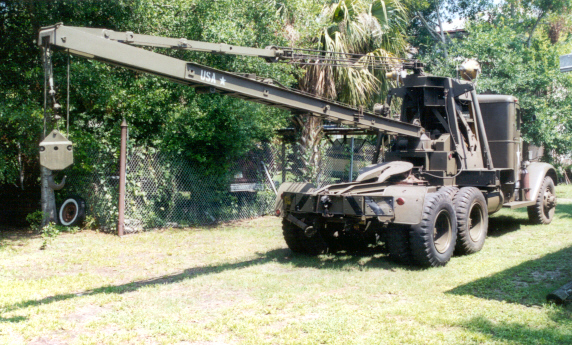
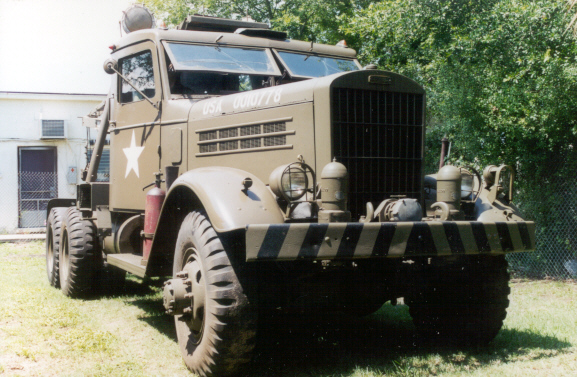
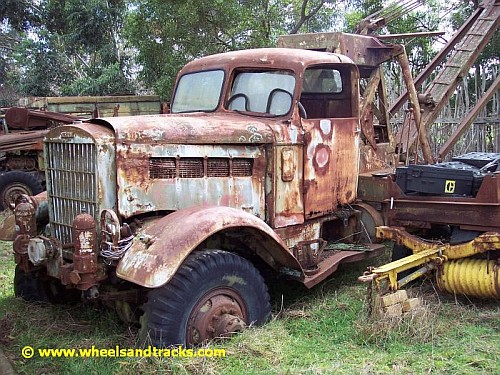
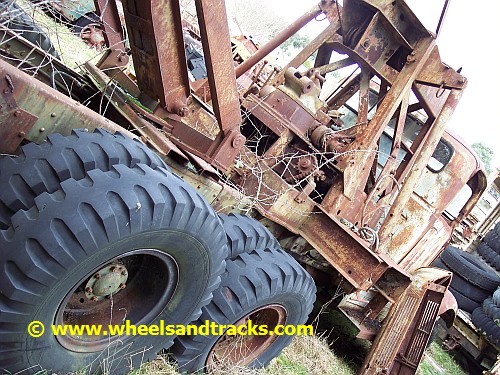
This C-2 used to belong to Steve Greenberg. He sold it to another collector where is is well cared for.
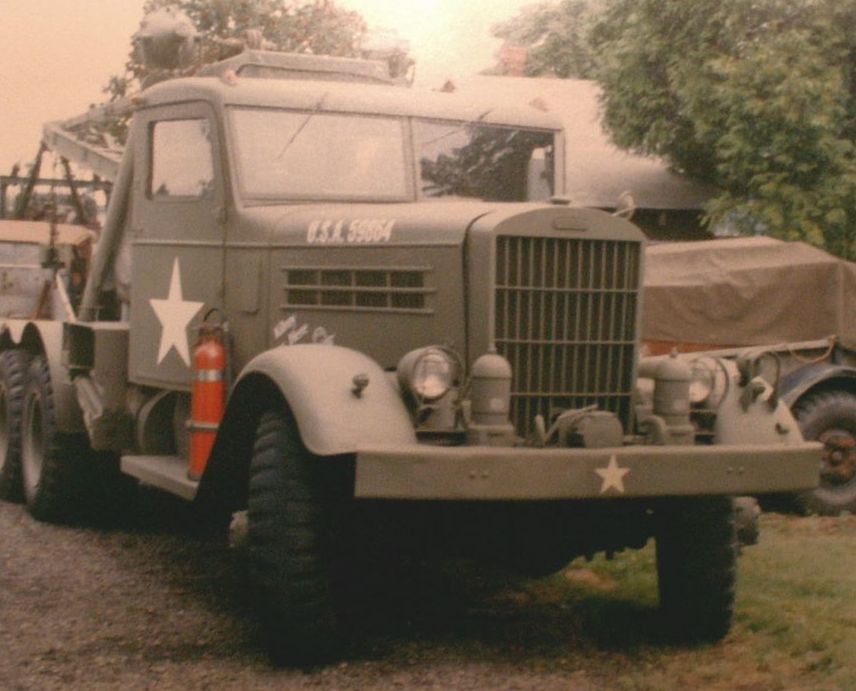
These are two wreckers that are presently for sale. The one in the background is a Sterling DDS235 according to Jeff.
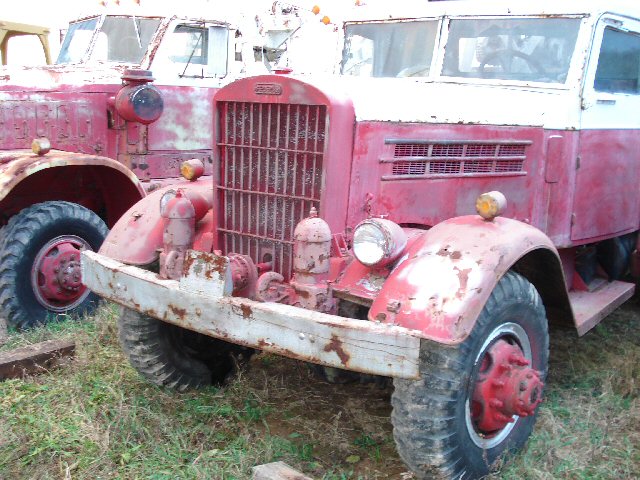
Restored Federal 606 Wrecker at the National War and Resistance Museum / Marshall Museum at Overloon, The Netherlands
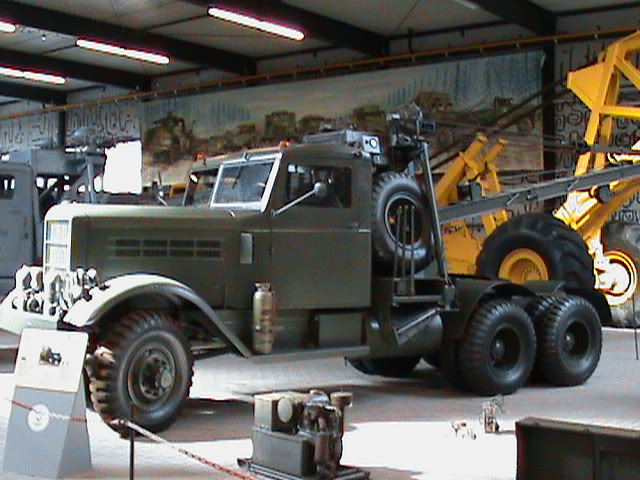
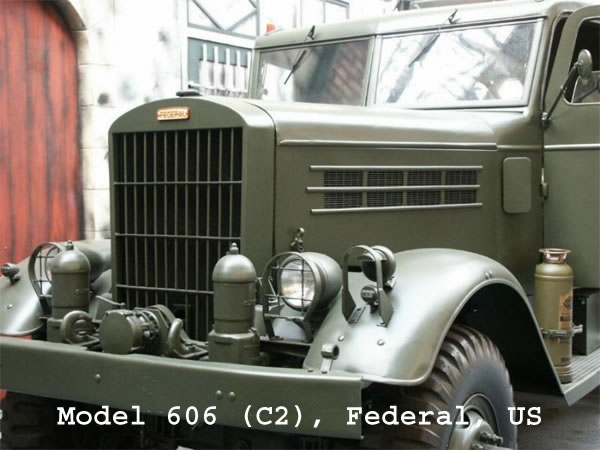
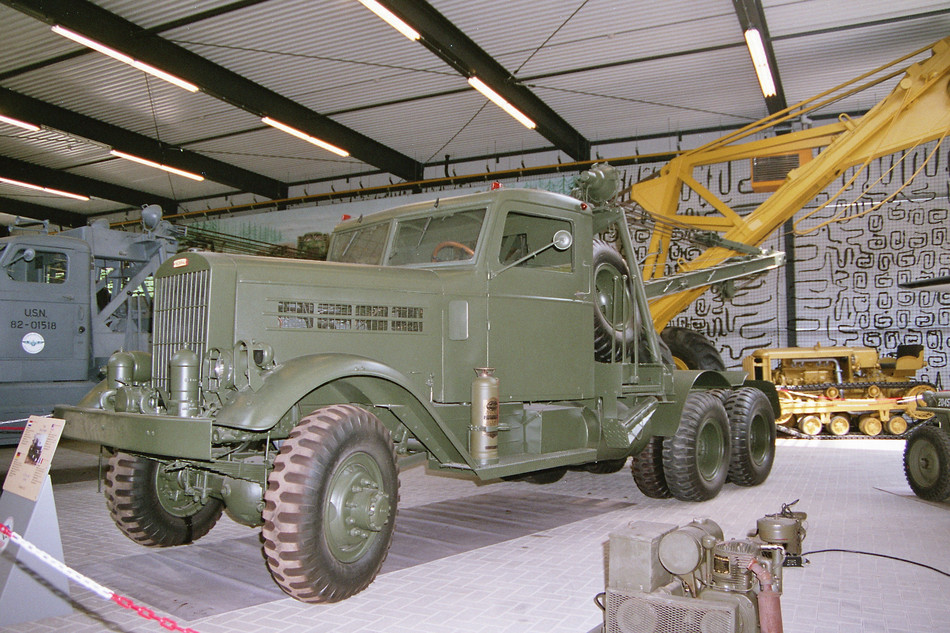
Here is a Navy Sterling DDS235 wrecker that is restored at the same National War and Resistance Museum.
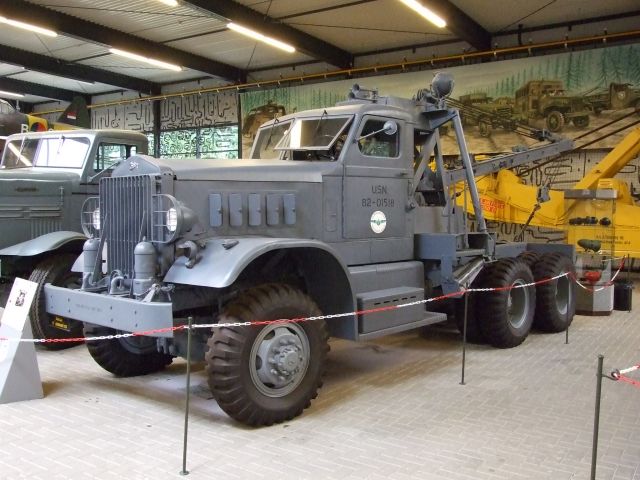
Below is a Navy Sterling DDS235 wrecker as identified by Jeff Lakaszcyck
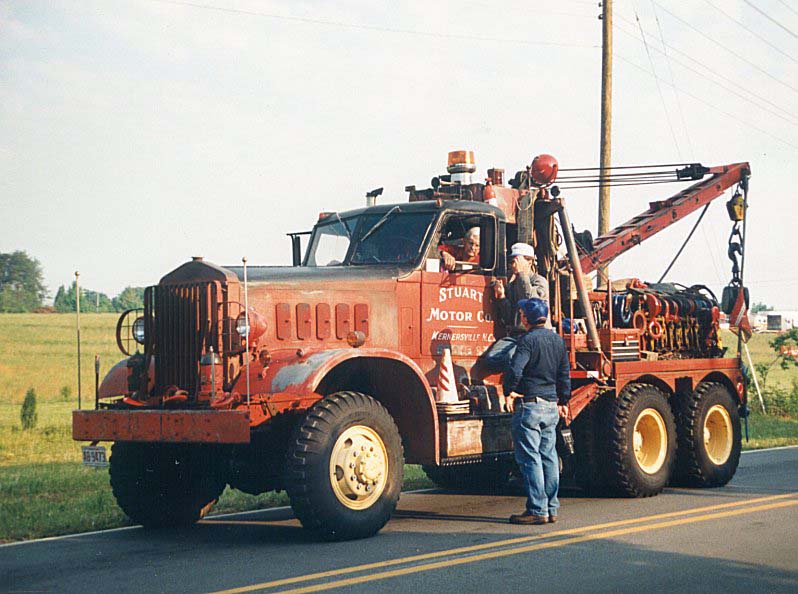
This C-2 was on display at the Imperial War Museum, Diu
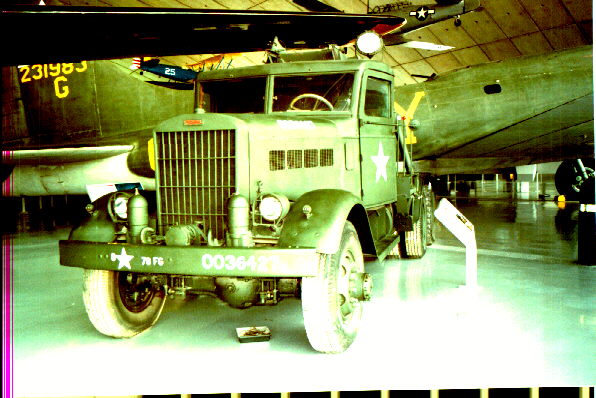
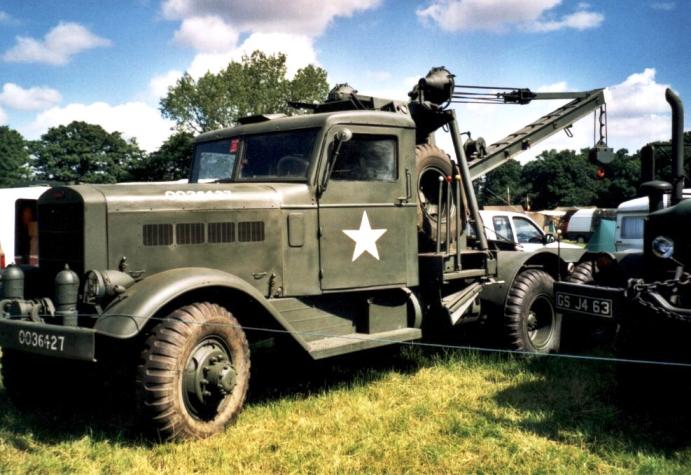
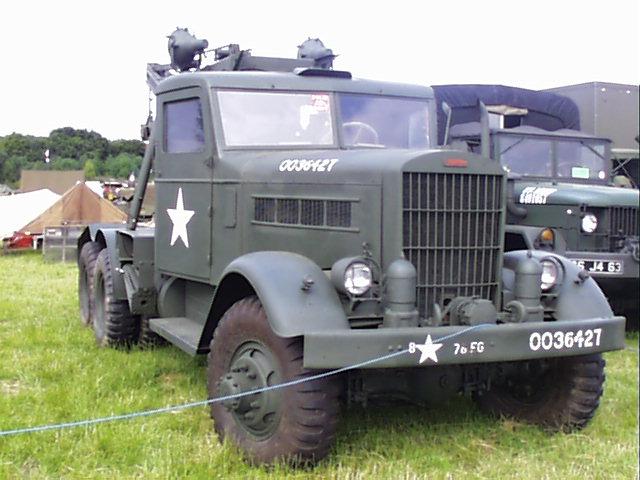
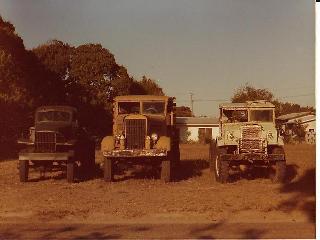
This C-2 was recently purchased by JC for his collection. He sent me these photos of it coming home:
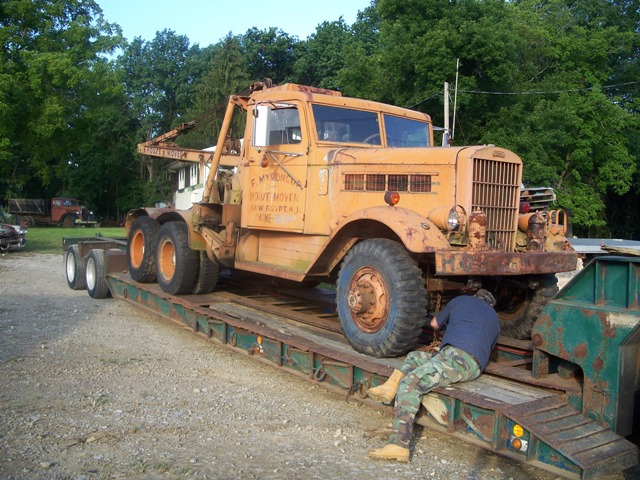
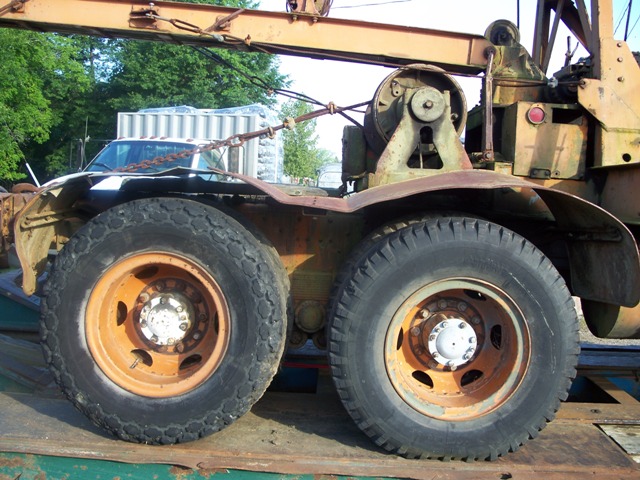
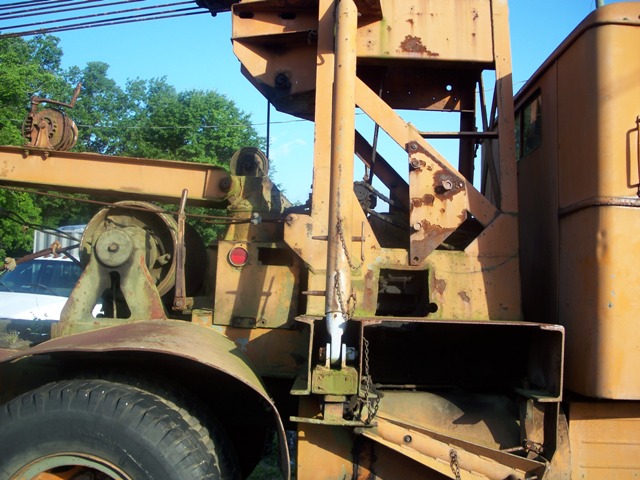

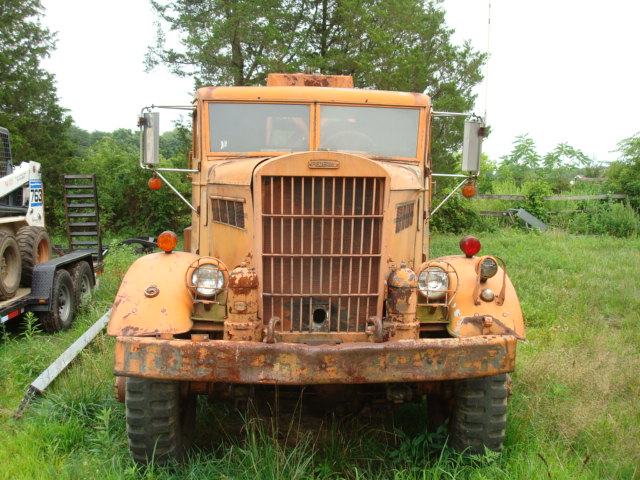

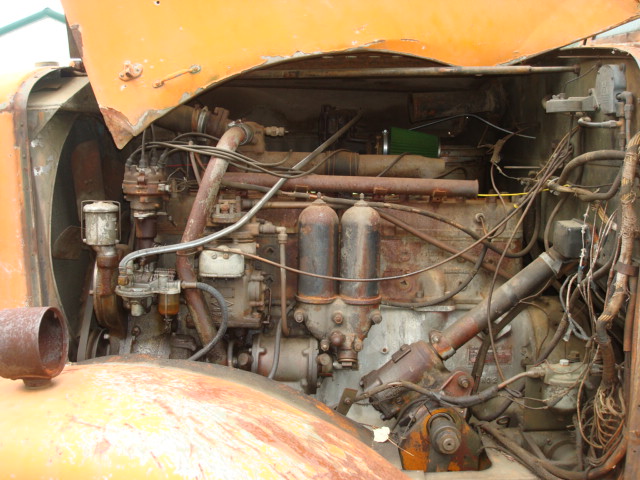
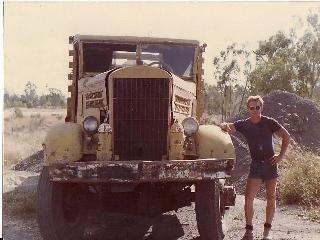
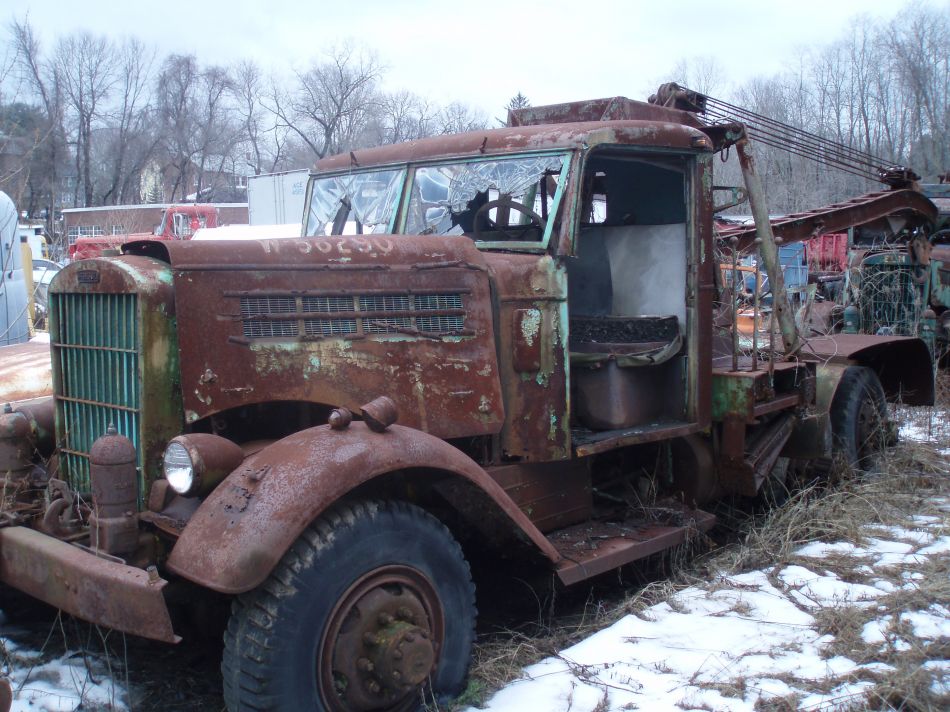
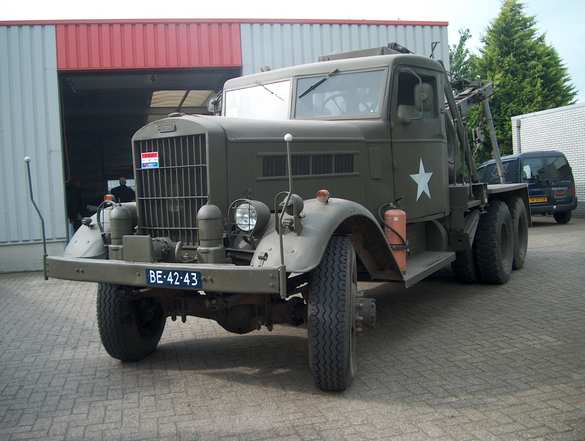
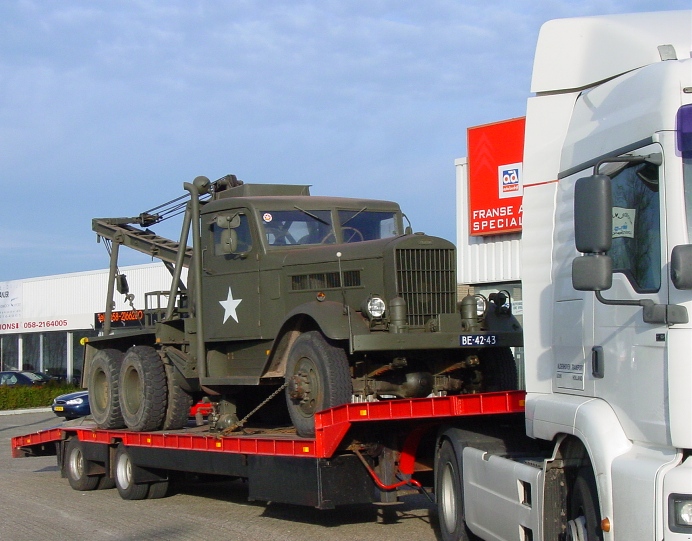
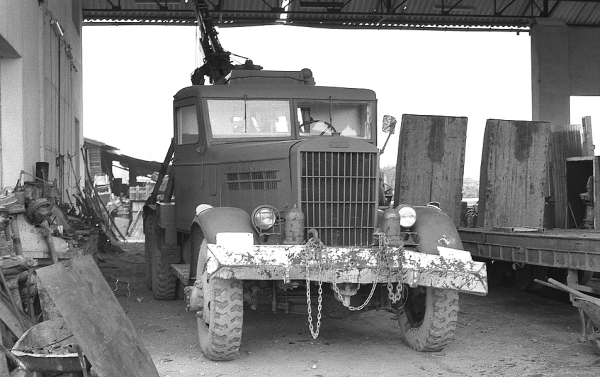

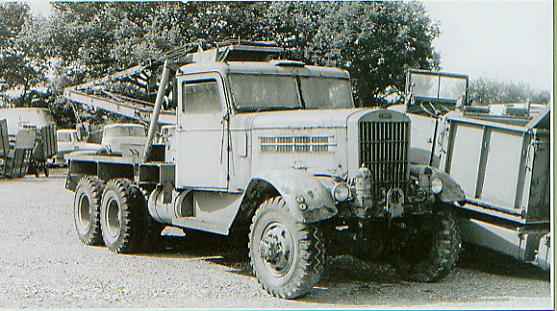
Here are some more really good photos of C2 survivors sent in by Jeff. Thanks for sending them.
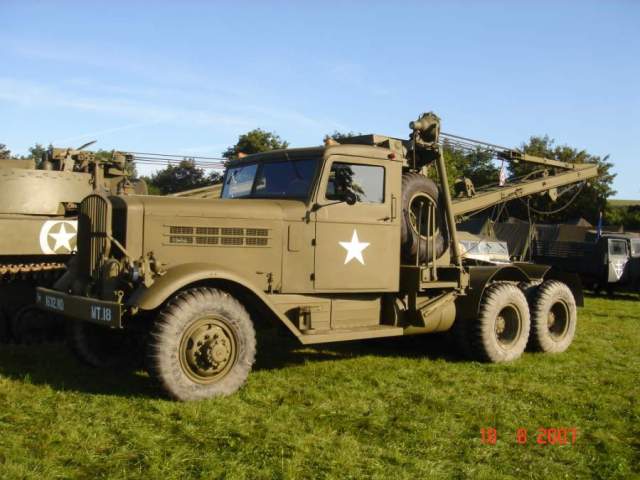
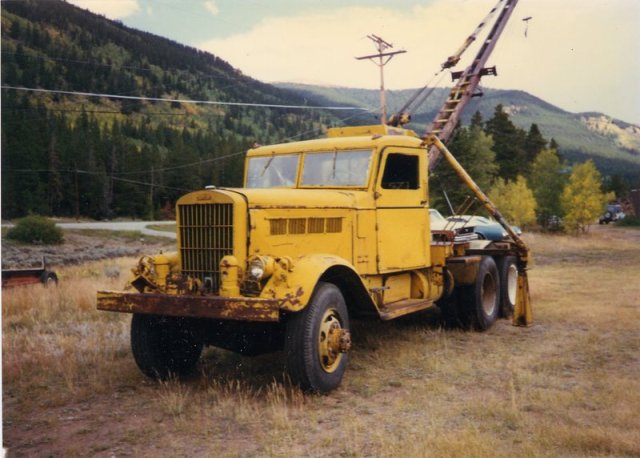
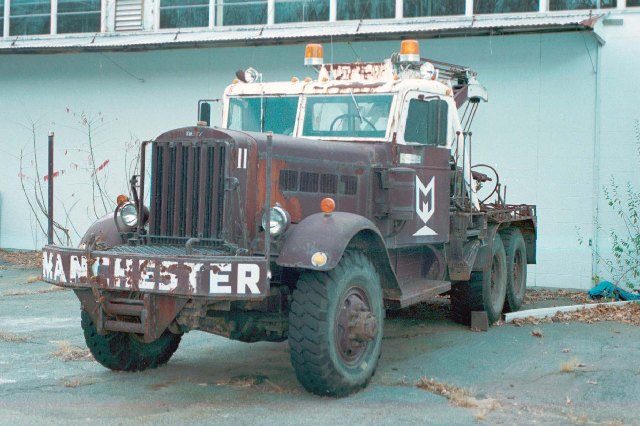
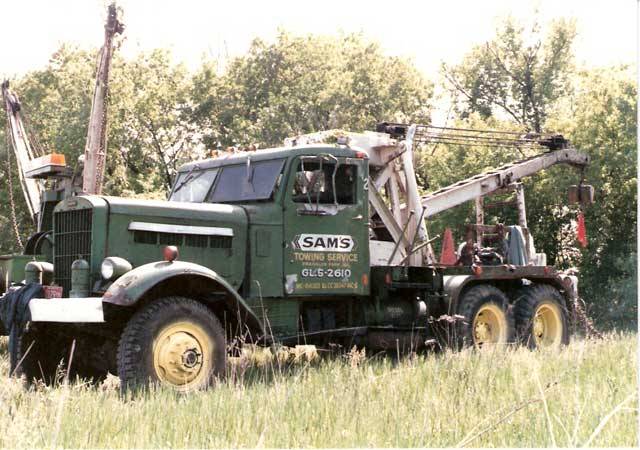
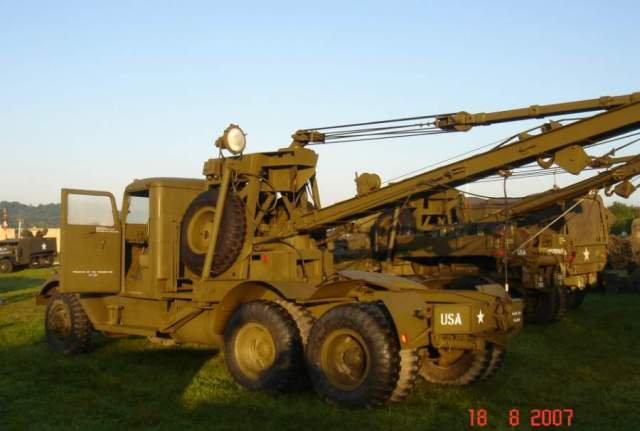
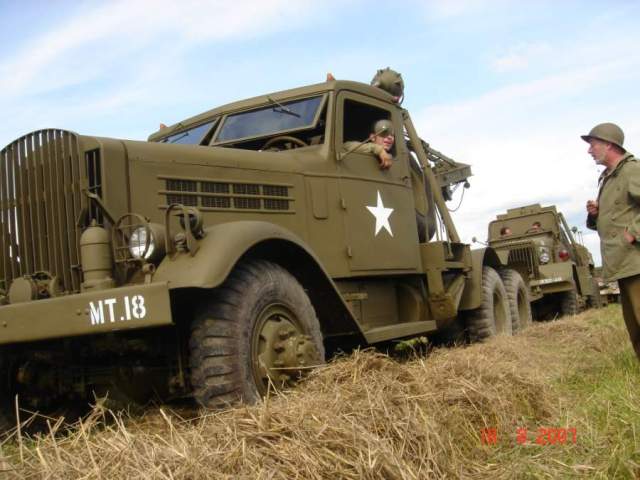
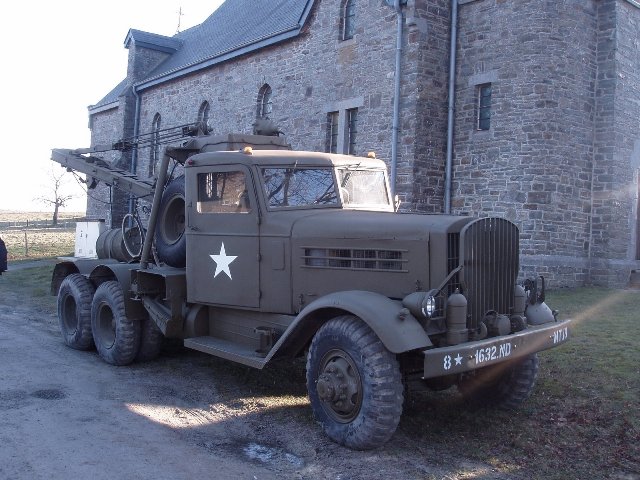
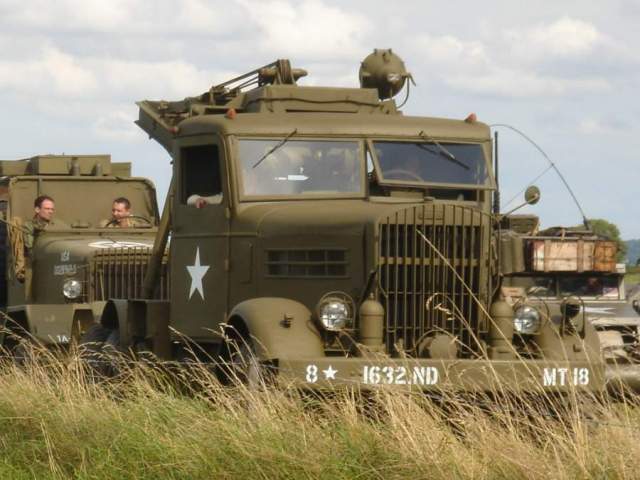
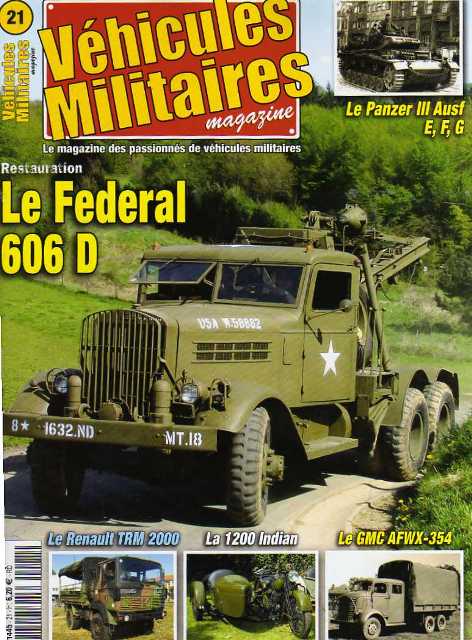
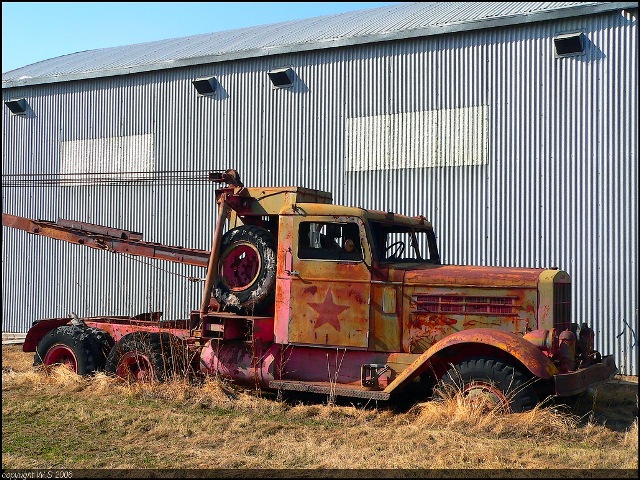
.jpg)
Should you have any stories or photos about the C-2 Wrecker that you might want to share please send them in and I will post it here.
The C2s story is greatone. Rarely has a piece of military equipment been so successfully adapted to the private sector or made such a contribution. They were the first big wreckers available cheap (government surplus) to the private sector. At a time when the Holmes W-45 was the industry standardand the Federal roads had not been upgraded since the 1926 federal highway building program trucks has grown in size and speed. the C2s were the only wreckers capable of dealing with them post WWII. Nearly everybody had one and the standard fare was to mount a heavy drag winch on the back to supplement the lifting power of the crane. That they have endured to this day (stuarts in Kernersville North Carolina) is a testament to their well built standard. I boughtmy Reo in 1998 from Batson'sGarage inTaylorville, SC. While it was the Series 29 truck, Mr Batson had a W-45 Holmes mounted on it and a drag winch and kept it until his death in 1990. According to his widow my truck was directly responsible in saving seven lives during its active usage period as a road wrecker. His widow put it in an old barn and I bought it in 1998. You will run into problems with rotten woodwork in thecab sooner or later when the door falls off someday. The answer to that problem lies in boat builders. I got a boat builder who used something like a Styrofoam shaving cream type stuff to make a model of the rotted piece, put it in a CNC machine, which cut it perfectly andit fit like it came from the factory."
Great story! Thanks for writing Tom. Here's another from Tom!
Hi Taigh:
Yes I can tell you several funny stories about our C2. There was the time one of our wrecker drivers left the boom too high and came down the main street of the little town tearing down all the red lights and costing our liability insurance company an arm and a leg. There was the time one of our drivers drove it off the road in a mucky swampy area and it was so heavy it sank up to the doors and took three of our other trucks to get it out. Fuel economy was not one of its virtues: ours got TWO miles to the gallon and only liked 100 octane fuel.The government disposed of 50 of the C2s at Warner Robbins air force base in 1954 and that's where everybody got their truck. They cost the government about $35,000 fully equipped a piece and the government sold them for 2500 a piece surplus. While my Uncle bought our truck at the auction (a D version with the sliding extendable boom) our driver could not get it into high gear and so he drove it from Macon Georgia to Orlando at 20 miles per hour, taking almost 20 hours to get there. At 35 miles per hour speed they were not well equipped to be "emergency type trucks". In fact the FHP complained bitterly about them because they were so slow, culminating in the first set of FHP wrecker rules in 1960 requiring all heavy wreckers to be "twin boom heavy wrecker thatis capable ofgoing 65 miles per hour". We had a policy of sending an F-800 Ford with the remounted W-35 toa wreck while the C2 was lumbering along. One can only guess that the fire truck version of the series 29 truck was not very successful in any application. Federal, Reo, Beiderman, Corbitt all were the same with interchangeable parts, only the name plate on the grill was different. the Sterling used a little different sheet metal.
Sanford was home to the US Navy's A3D Skywarrior for the Atlantic Fleet during the 1950s and the A5A Vigilante in the 1960s. Whenever the Navy would crash a plane (which was fairly frequently) they went send all of their Marmon Herrington crash trucks and their Oshkosh Silent Hoist Wrecker (the newer version of the C2 - check out the tow411.net website and look at the vintage pictures) to as close as they could get to the crash. Inevitably as their stuff went out in the swamp it sank andthe C2would spend the next several days recovering the navy's crash trucks and Silent Hoist. The only time I ever remember seeing the C2 challenged was in dealing with the larger and heavier sunk Oshkosh unit. Normally with the flotation tires which we used and a chain the C2 could drag out the fire trucks with no problem but the wrecker was another matter. it had to be winched all the way and the C2 had to use its Garwood crane occasional to help lift and break the suction. Many times mats had to be put under the Oshkosh and still it could not help itself. The C2 had much more power than the diesel powered Oshkosh.
Our truck did numerous emergency calls where cars would careen off US 17 and into Lake Monroe trapping the driver and occupants. One night when the draw bridge was open a car ran through it and drowned four college students. I've got some pictures of these recoveries somewhere but most of them just show the car hanging on the wrecker hook like a fish. I'll try to copy some of them and send them to you. The bread and butter work of the C2s were the orange groves around Orlando. With their all wheel drive they could go out in the grove hook to a loaded fruit truck and drive out dragging it along behind like it was nothing. There weresix C2s in and within twenty miles of Orlando in the 1950s. Only Robert's is left, the rest have been worn out junked. There were several versions of the truck. Reo mounted thecrane onsome ten ton trucks, whereas the Federals were 7 1/2 (mine is a 7 1/2 Reo). The ten tonmade it sit higher and made it look much bigger. The Navy also bought a version of this on a Sterling and then went to a much larger and heavier 12 ton truck. While there were several of these around they had chain drive and were too big for the highways and therefore not very popular in commercial applications.
One of my earliest memories was going to Daytona in the C2 with myDad whenI was about five years old. Hecould sit behind the wheeland I could stretch out completely. Funny thing when Icranked the Reo the first time the sound of that Hercules engine took me back to my childhood. I drove a twin screw R Model Mack 750 Holmes wrecker while I was in college andI was completely surprised by how the Reo drove and handled. It was much more like a big Jeep than a Mack off road dump truck.It has much more power in the Spicer transmission at lower speeds than does the Mack duplex in the low range.
Tom
And another! November 2016
My Reo just repainted for the second time and a picture while painting. The old girl dressed up for the ball. This is the Reo with the W-45-650 Holmes tank retriever type. She recently got to appear with some of these new KW and Peterbilt wreckersand held her own. Everybody wants to see it and see it operate. I know what you are asking for. I think I know where there might be one. She is the oldest licensed big wrecker in the State of Georgia and has a tag on the front that says "WWII VET" (delivery date March 9, 1945). Not too long ago she helped two modern trucks with a sunken loader. The two modern trucks could notbudge it but once the Reo dug in with its chock blocks its 45,000 pound drag winch did not know it was a problem. Two modern wrecker drivers just stood there with mouths gagged open. New ones with their load gauges pull up to their limit and that's it. The Reo pulls until something happens. You just don't want to be real close when its doing it with its 1 inch cable.
The power is just awesome. Unlike modern trucks it gets its power from its gearing and the winches are geared down to the point you do not know they are even moving in the lowest range. I was dealing with a lot of rust and so I had the grill chromed and the wheels replaced with modern Budds 11:00 x 24.5. So now a tire shop will actually change a tire which they would not with the old OSHA banned original lock rings wheels.
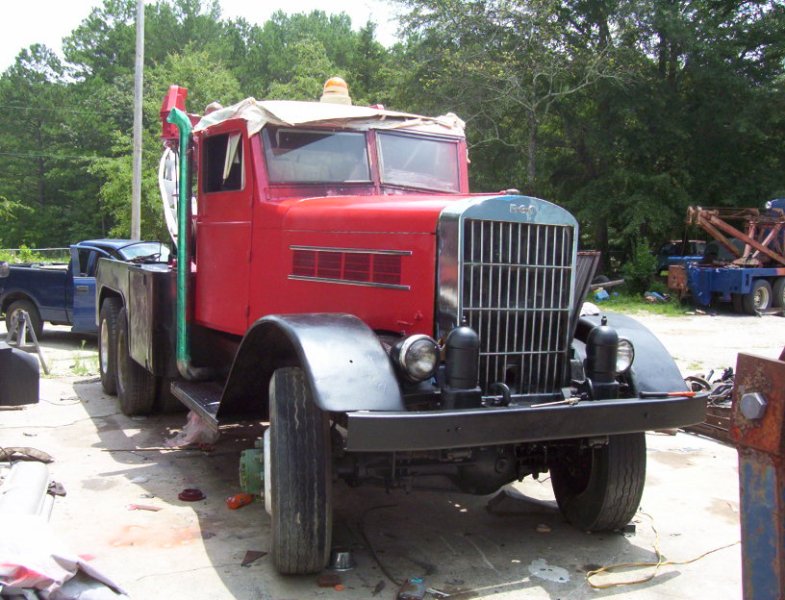
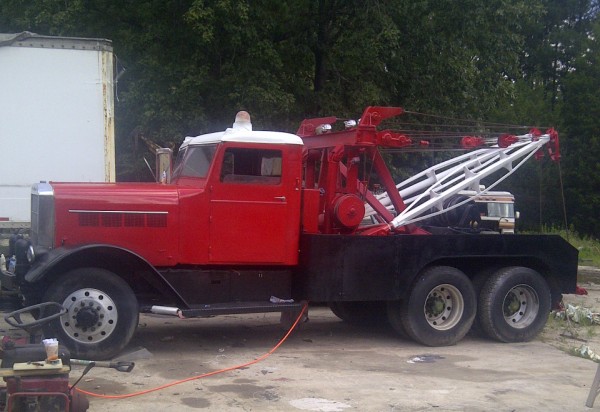
The operating histories of the C2s were pretty standard. Either wrecker companies used chains and the truck itself for heavy pulling or they tore up the little winch under the back and replaced it with a big one. The little winch (10,000 pounds?) was fine for aircraft but not for trucks which had grown to about 40,000 pounds by 1946. Pirtle was unique in that he preferred the chain to mounting a much larger winch. One of his prime customers wasfruit trucks stuck, and buried to the axle with the trailerholding every orange you could put on it. Scales meant nothing in those days so it was not uncommon to have one weighing 50,000 05 60,000 pounds. When you realize the capacity of the C2 or F2 tractor was 120,000 pounds on a 60 degree grade this was a mere suggestion they were trying to pull something. They could do it effortlessly with just a chain between the pintle hook and the towed vehicle. The old KB Internationals and L Model Mack's had big eyes in their front frames or hooks so you merely hookeda chain and put the C2 in low gear low range and drove out with the stuck truck often following the wrecker up to the paved road.
The Garwood crane was often used in a capacity like that of the modern construction crane - boom up and to the right, left or straight back. Our truck had industrial applications in that we frequently unloaded huge spools of telephone or power cables off flat bed trucks for the electric and telephone companies. I am sure that one did too.Again if you watch the evening news you will see rotators boom left or right doing what they do with cars and trucks in impossible situations. There used to be a crazy kind of accident where a car could run up the guy wire of a electric power pole and the old power poles had screw-in steps as a ladder for the lineman to ascend. Cars would go up the guy wire and hang on the step much like a fishing pole with a fish. The problem was the car weighed three tons and a little wrecker did not have the height to get it down, ergo a C2 call which did it effortlessly. You drove up, put the boom up and out to the side, used a chain around something in the car's front end and the C2 triple cable hook and simply lifted it up to get it off the footstep (or in some cases with a big pry bar to jam the chassis and the footstep apart or a pipe wrench to unscrew the step from the pole.) and lowered the car from vertical to horizontal. I remember our truck doing these fairly frequently.
We had a lake along U S 17 with a wall that cars often skidded off the steeply banked road on rainy nights. If you used a two or three ton smaller wrecker the car would hangup on the wall and a car full of water is very heavy. To getthe car over the wall you had to elevate the smaller wrecker booms and then you risked turning the wrecker overif the water filled car shifted to the leftor the right. The C2 was so big and heavy that relatively speaking a car full of water was still easilymanaged. You just lifted it up, again like a fish on a pole and drove up and out. Here the front wheel drive helped especially on wet grass or ground. I have a couple of pictures somewhere of these. I will try to find and send them to you.
A third fairly standard use was the dropped trailer. The truck tractor goes to back under a trailer and the landing gear collapses from the weigh or just gives way and the trailer is down by the front end. You lift the front of the trailer and put blocks under it until the road tractor can back under it. The Garwood crane may have been rates at 20,000 pounds but I can tell you that one has picked up 40,000 and 50,000 pound orange trailers. Here the boom was straight back or elevated depending on the load. They had an aluminum shear pin which everybody just replaced with steel. I never saw a Garwood crane damaged from overload but I guess it would be possible to do this. A variant on this was on the news about a month ago where a bus plowed into the back of a trailer in Palm Springs-Desert Springs California killing 13 people coming back from Las Vegas. The pictures show the rotator to the side boom extended picking up the trailer (so as to get the bus out and the boogie (trailer wheels) back into place. The C2 could easily have done what the rotator did because the load was spilled all over the road. If a trailer was burned in two, or broken into two pieces, or disintegrated from impact the C2 was in its element to handle it. It was not uncommon for trailer brakes to get hot and set the tires on fire burning up the rear of a trailer (still happens) so you have a big box that won't roll. How do you put it on a landoll. or dolly in the front, or pick up up whole or in pieces.
This is how C2s were used. Same exact applications today except the rotators are more powerful. We had to be very careful with outrigger legs in Florida because unless they were put on a cross tie or something really solid they could just sink into the sand and damage the frame of the truck. With cars the C2 frame was heavy enough for this not to be a problem but it could be with trucks. It was often preferred to use the boom straight back rather than at the side if there was a heavy load for this reason.
A C2 disaster: Our truck went to a stuck truck one afternoon and the driver pulled off the side of the road and got out to go look at the stuck semi. When he turned around the C2 had sunk to the point its fuel tanks were on the ground and it proceeded to sink on to the axles in Florida muck, a combination of plant and mud swamp ground. Three ton Ford with a 15 ton W 35 comes to help get the C2 out but C2 is into the suction of the marshy ground. Two little wreckers are added and the C2 is still stuck but good. Set up to the front they could not move it, set up to the back they could not move it. Finally along comes a power company truck (who was out customer) with four old power poles on a trailer that had been replaced. So we hooked to a tree and leaded the C2 over one way and put two poles under one side, then hooked to the stuck semi truck and leaned the C2 to the other side and put two power poles on the other side and then we could pull it out. After about three hours work and the luck of the utility truck coming by with poles the C2 was able to hook to the stuck semi and winch it out in 5 minutes.
Reo has the Hercules.
The biggest drawback to the C2 was in its emergency capacity role. It was very slow (at 36 m.p.h.) and many times in wreck situations getting there fast to lift somethingcan the difference between life and death. While the C2 was a tremendous asset in what it could do if the accident was 25 miles away with two or three red lights it could take an hour to arrive and that's assuming a driver was there with it and not at home where he had to go swap small truck for big truck. My Dad hated our C2 for this reason and was the reason he eventually sold it. In 10-18 emergency situations it was not uncommon for a responding little wrecker to go 80 miles an hour to an accident with entrapment and the C2 could not do anything like that.
Weimprovedthis situationby sending a smaller truck which we deemed the "trouble truck" to get there fast with rescue equipment, bars, j hooks with eyes that could tear sheet metal apart, and heavy chains, etc. but if you absolutely needed heavy lifting you had to wait for the C2 to get there. Many times with the smaller truck on arrival at the scene could radio (all our trucks were two way radio equipped) the C2 operator how to come in, set up, what to expect, etc. Often with the trouble truck the driver could be chaining up whatever for the C2 and its operator simply to swing its boom, lower the hook enough to hook into the chain, and lift. This was actually a pretty good solution because the Mack's with big 650 and 750 Holmes craneslater had just one operator trying to hook the chains and then operate the crane to do what needed done which was not as fast as the two truck response. We later went back to two truck for this reason even with R model Mack's that could go 80 themselves.
There was a time saving factor with the two man crew in that the first man there had time to evaluate and really be right in what he was telling the C2 operator to do. Really you had two heavy operators one with a heavy truck and one with a small one. This was the life saving combination.
April 5th, 2010
Here is some more great information from Jeff about the Sterling wreckers used by the Navy and the Marine Corps:
I thought I would send you some strictly Sterling stuff. Even though the 10 ton Sterling DDS235 wreckers were not technically C-2's, they were certainly very similar and perhaps even the Navy equivalent. They certainly deserve space on your website.If you haven't figured it out, I really have a soft spot for these Sterling's. I probably have 100 times more info than this on the civilian models.
Sterling trucks go back to 1907, and were built in Milwaukee. They were very respected in their time, particularly in the '20's thru '40's. Never a large producer, they were very popular heavy duty trucks, particularly in the northeast and west coast. Sterling's main claim to fame was their wood-lined frames, and chain drive models which they produced right up to the end, long after anyone else was building them.Sterling was bought out by White in 1951. Production continued as Sterling-White until 1953 , when White pulled the plug. The late model Sterling's you see on today's highways are absolutely no relation to the original. The new trucks are the former Ford heavy duty line, sold to Freightliner/Mercedes Benz in 1998.
On many of the photos I have placed a 2 letter code at the end of the description, that is the initials of the person who either took the photo, or sent it to me.
BG is Bob Gilbreath
DM is Don MacKenzie
TS is Tom Siemons
PM is Pat MacPhail
I have 4 shots of the Stuart Motors DDS235, (one you already have), one is a head on shot taken at the same time as the one you have posted. Both were taken by Bob Gilbreath. Theother 2 are more recent, and were sent to me by Don MacKenzie. This truck still gets worked. It appears to have been retrofitted with a diesel. Don also sent the great factory photo.
There are 3 photos of survivors from Tom Siemons, a Sterling collector. The yellow wreckerhas been re-cabbed with Sterling's post war cab. Notice the rounded windshield corners. The other yellow truck photo, with the long wheelbase, is from Pat MacPhail, another old truck collector.
There are a couple of "official photos", with specs on the backside of one, and some military shots. These all came from various places on the internet.
Sterling also built a smaller 6x6 with similar wrecker equipment, the DDS150. I believe this was a 4-5 ton model. It appears to have been built for the Navy to handle torpedoes. I have never seen an "in service" photo but a few of these trucks have survived. This is another truck that is not in any of the books.
Perhaps the largest standardized wrecker of any type built during the war was Sterling's huge 6x4 HCS330, also built for the Navy. These trucks were rated at 15 tons, and featured Sterling's patented center driven dual chain drive bogie. The bogie was very similar in appearance to the Knuckey bogie used on the Pacific M26 "Dragon Wagon", but Sterling had introduced theirs many years previous, in 1931. Military photos of theHCS330's are rare also. The Lynch civilian truck in the photo is very similar in appearance to the military models, with no major modifications.
Taigh, in just a short time you already have the best website devoted to the big military wreckers. You have done a nice job, and it is especially commendable since the main reason for your website is to promote the aircraft side of your business.Idon't know how far you want to stray fromthe wreckers,if at all, but I do have some more photos of USAAF Reo and Biederman F-1 fuel tankers, and Reo and Sterling Cardox crash trucks. Most of these are military "in service" shots. I can send them along if you are interested.
Thanks for taking the time to post all this stuff, keep up the good work.
Take care,
Jeff
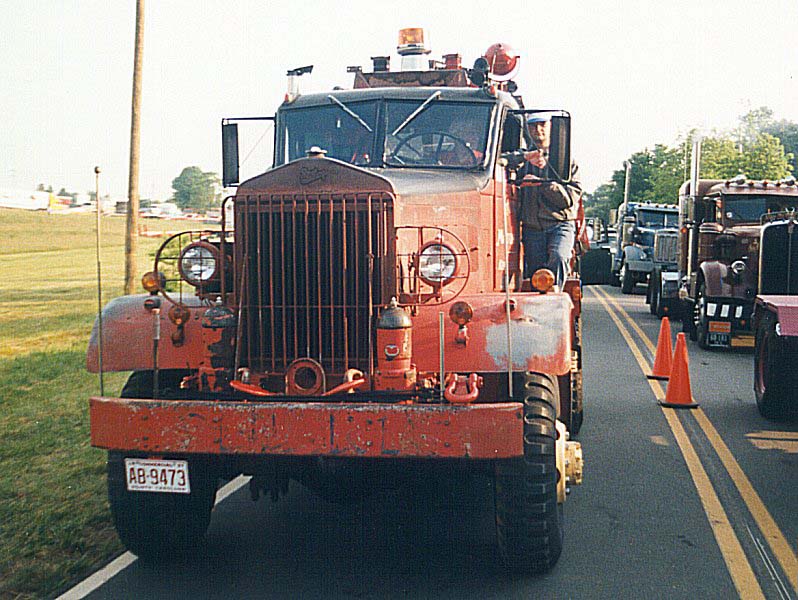
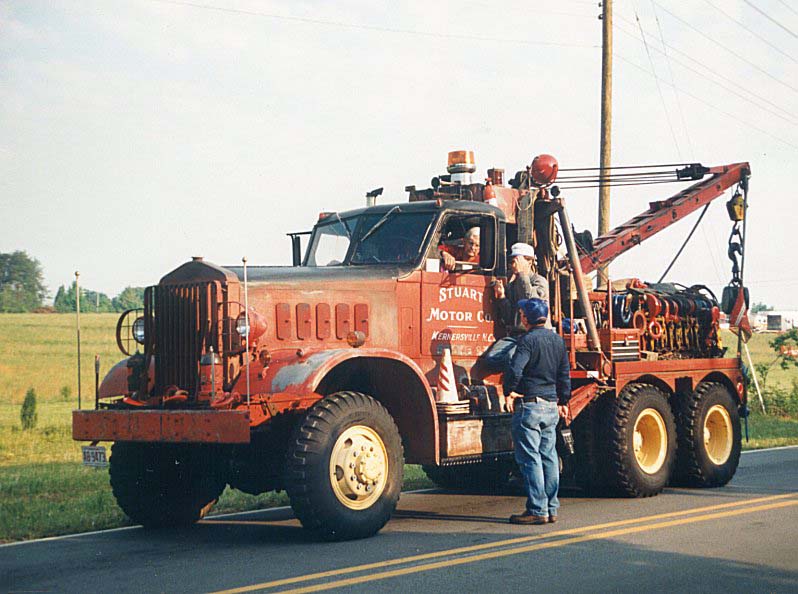
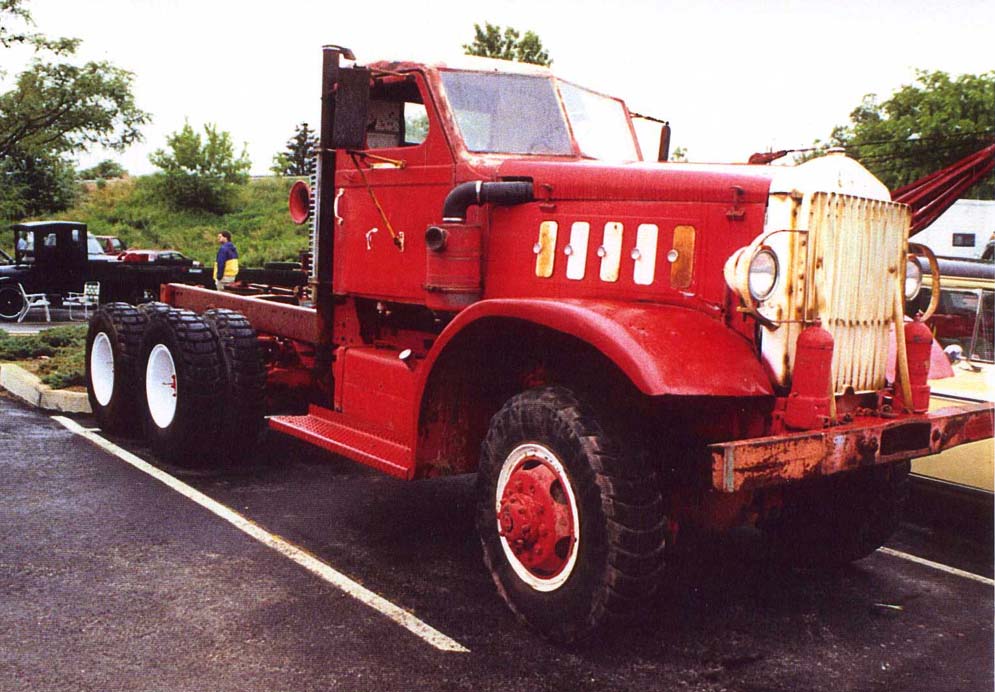

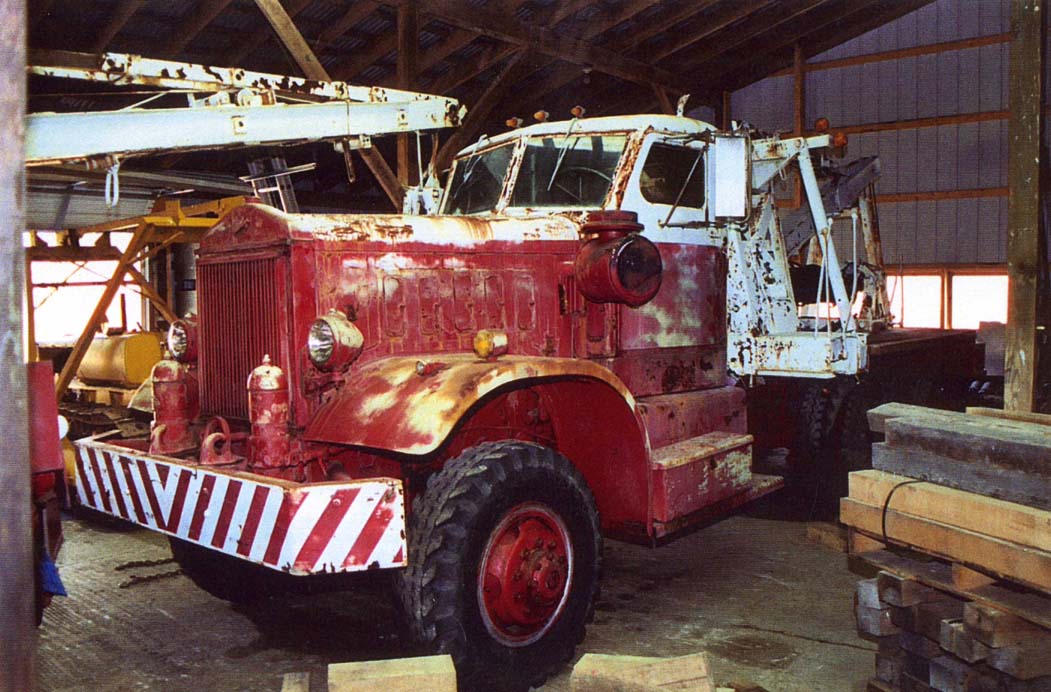
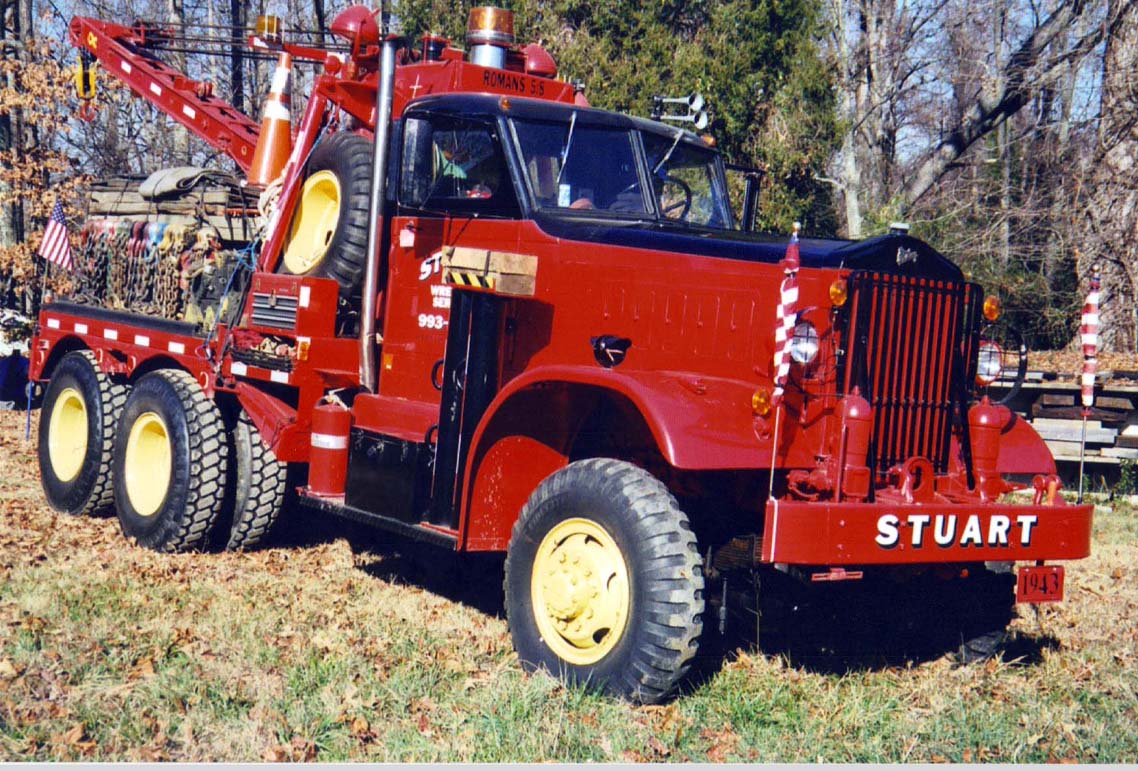
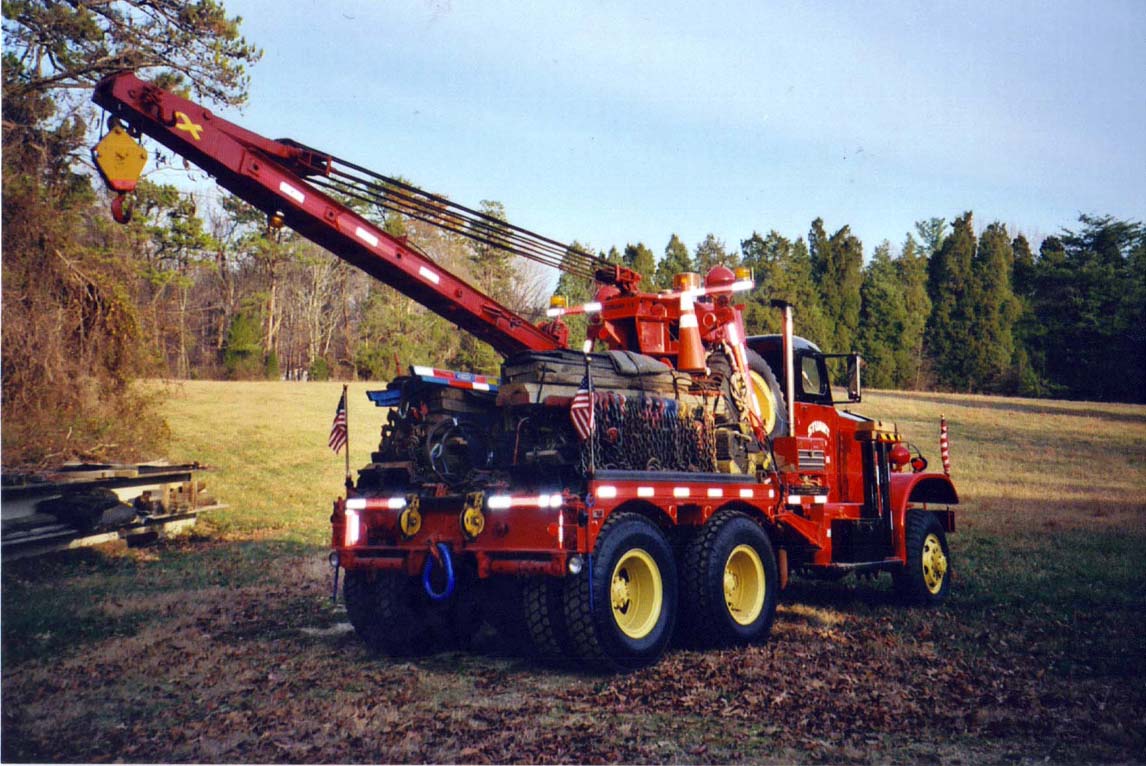
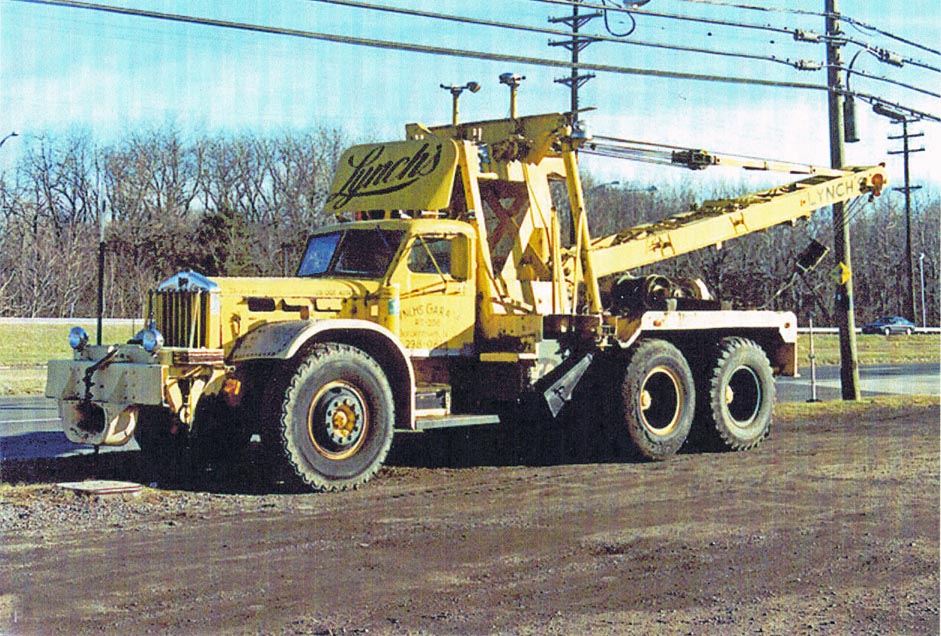
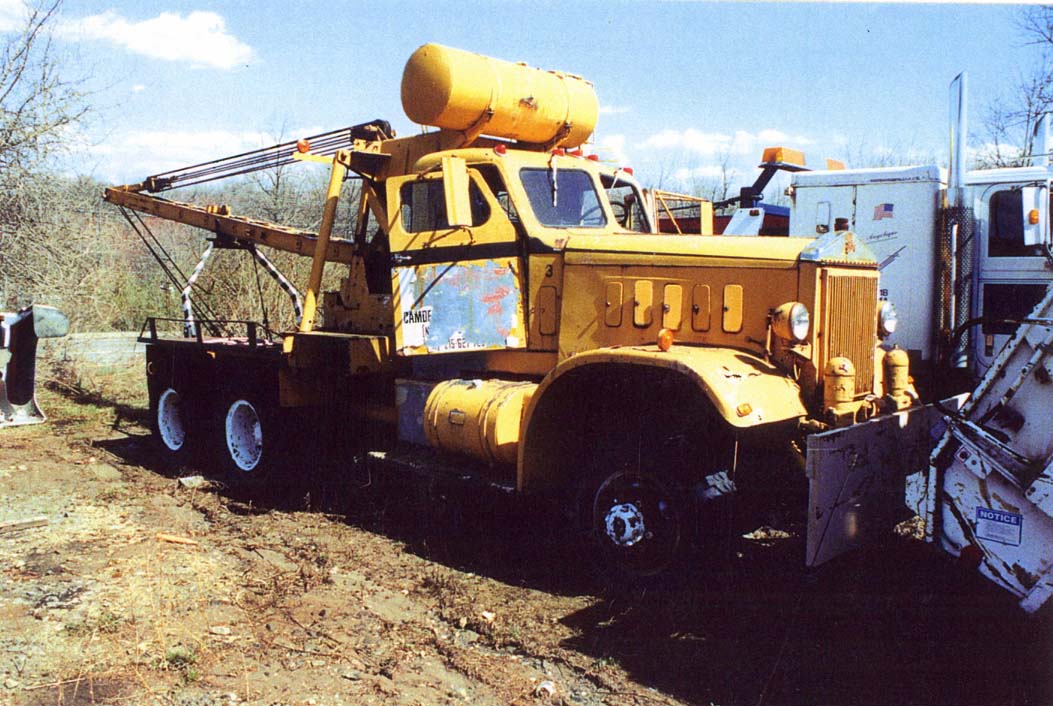
For more wartime photos of Sterling wreckers and others from Jeff Click here